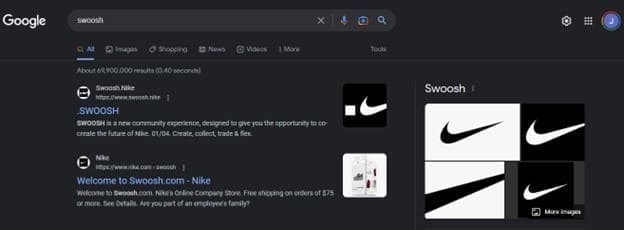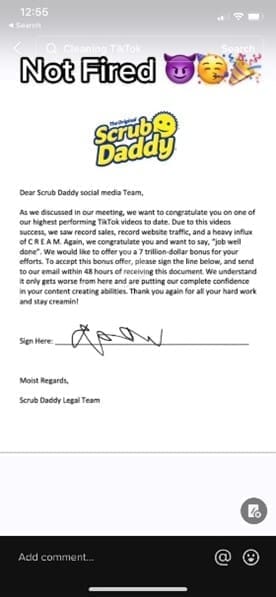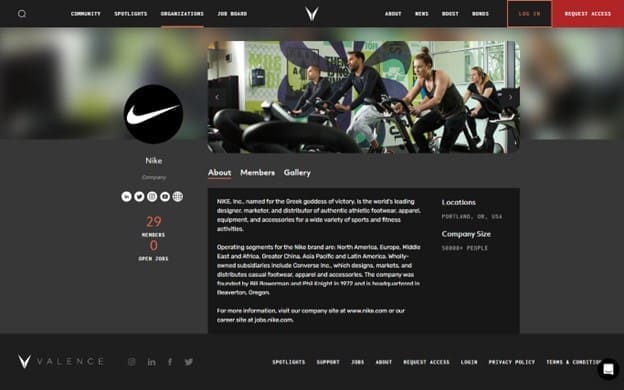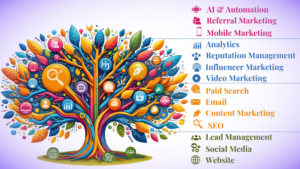 You may not notice the inconspicuous TM, SM, and encircled “R” on branded materials as you go about your day, but chances are, these trademark symbols cross your path hundreds, if not thousands, of times each day. Even though they may go completely unnoticed by most people, these marks mean something powerful: ownership. A business or other entity has the exclusive right to use the trademarked item.
You may not notice the inconspicuous TM, SM, and encircled “R” on branded materials as you go about your day, but chances are, these trademark symbols cross your path hundreds, if not thousands, of times each day. Even though they may go completely unnoticed by most people, these marks mean something powerful: ownership. A business or other entity has the exclusive right to use the trademarked item.
Because the trademark symbol has power, whatever it’s attached to can hold significant power too. If leveraged properly, it can impact emotions, influence buying decisions, and distinguish one brand from the next. In fact, trademarked assets may be among the most valuable assets a company can possess. Furthermore, brands that leverage trademarks are 10 percent more likely to become high-growth firms, yet less than nine percent of SMEs own any kind of IP right, compared to 60 percent of larger firms, per the World Intellectual Property Organization ( WIPO ).
On this page, I will walk you through how trademarking works, provide examples of trademark marketing, cover why failure to protect your trademarks is a mistake your brand cannot afford to make, and provide you with a few tips to get started.
What’s a Trademark?
A trademark is a recognizable symbol, word, or phrase that’s associated with a specific product and legally differentiates it from all others. It also denotes ownership of the marked item and is considered a form of intellectual property. Trademarks may or may not be registered with a regulatory authority.
Symbols Associated with Trademarks
- ™ – The TM symbol is short for “trademark.” It’s used to denote that the corresponding words or symbols are associated with a product or good and generally means that the trademark is not registered. For instance, an FMCG company that produces energy drinks might add the TM insignia next to its logo.
- ℠ – The SM symbol is short for “service mark.” It’s used to denote that the corresponding words or symbols are associated with a service and generally means that the trademark is not registered. For instance, a professional service provider like an accountant might include the SM insignia next to its logo.
- ® – The (R) symbol is short for “registered trademark.” It’s used to denote that the corresponding words or symbols are associated with a product, good, or service and means that the trademarked content is registered with a regulatory authority. For instance, a healthcare company that provides skincare treatments and sells branded products might use the symbol, as would a SaaS company.
- © – The (C) symbol is short for “copyright.” It’s not a trademark, but it relates to intellectual property. It means that a creative work, such as a book, image, website, or video, cannot be used without the owner’s permission. For instance, you’ll see this mark at the bottom of my website.

Famous Examples of Trademarks
You can probably picture the Nike swoosh or the McDonald’s golden arches without being shown the corresponding images. These symbols are instantly recognizable, and the brands fiercely guard them. They’ll always appear with the (R) registered trademark sign.
Odds are, you know the phrases “What’s in your wallet?” and “That was easy.” These are registered trademarks of CapitalOne and Staples, respectively. The brands communicate this in print by including the (R) symbol in their marketing.
How Trademarks Benefit Your Brand and Marketing
With definitions and examples covered, it’s probably easy to see how trademarks work and benefit businesses on a large scale, but what about smaller businesses? In fact, they deliver many of the same benefits.
Trademarks Make it Easy for Customers to Find You
The online marketplace is crowded, and it can be difficult to make your business stand out among competitors. As people learn your trademarked names and phrases, they’ll start using those to find you. Trademarks serve two essential purposes in this respect. First, they give you the exclusive right to use them. That means you can create branded content that leverages your trademarks and ensure your brand shows up first when people run online searches for them.
For instance, “Just Do It” is searched for around 50,000 times per month, according to WordStream. The word “swoosh” receives about the same. Nike, for example, does an excellent job of protecting not only the company name but slogans, taglines, and other branded terms.
 The second big advantage is that trademarks eliminate the clutter when people search for your terms. For instance, if someone tries to post an ad using your trademarks in an attempt to appear before your business in search, the ad can be blacklisted by Google.
The second big advantage is that trademarks eliminate the clutter when people search for your terms. For instance, if someone tries to post an ad using your trademarks in an attempt to appear before your business in search, the ad can be blacklisted by Google.
Trademarks Communicate Your Message
In a broad sense, branding can be considered the ethos of your business. It’s not just the logos and taglines. It’s how your products or services make your customers feel. When you trademark something that conveys a specific message, you “own” that message. Take the image below, for example.
 Even if you’ve never seen this product before, you know that it belongs to a feel-good brand. You might even be intrigued or want to learn more about it based only on its trademarked design. This example comes from the brand Scrub Daddy. They literally trademarked smiling sponges with hair. Nobody else can make them, so nobody else can create the same warm feeling with a similar product. Your trademarks can communicate messages to consumers in a similar fashion.
Even if you’ve never seen this product before, you know that it belongs to a feel-good brand. You might even be intrigued or want to learn more about it based only on its trademarked design. This example comes from the brand Scrub Daddy. They literally trademarked smiling sponges with hair. Nobody else can make them, so nobody else can create the same warm feeling with a similar product. Your trademarks can communicate messages to consumers in a similar fashion.
Trademarks Can Help Build Your Reputation
Good marketing and branding go hand-in-hand. The more often you use your branded terms in your marketing, the more people will associate you with them and start searching for them. Again, when they’re trademarked, you also have the advantage of creating a clear path to your business. There’s no clutter or noise for people to cut through when they want to find you. Using trademarks regularly helps build trust and familiarity with customers.
The story of Scrub Daddy is a great example here too. Almost nobody searched for the term “Scrub Daddy” before 2012, as can be seen on Google Trends.

Then, we see a nice spike in October 2012. That’s when the brand’s founder appeared in an episode of Shark Tank.
Simply by having the trademarked term “Scrub Daddy,” the brand made it exponentially easier for people to retain the name and find its products. In addition, interest in the search term, and the brand’s reputation, grew because of trademarking.
Particularly in the digital world, brands must also be especially mindful of reputation management. Buying decisions are often based exclusively on what others say about a brand. You cannot control that narrative in a cluttered marketplace where anyone can use your branding. Trademarking plays a major role in this too.
For instance, when people see the trademarked Scrub Daddy design and logo in stores, on shopping channels, or anywhere else, they know they’re receiving authentic products. Nobody can sell knockoffs that use these marks and damage the company’s reputation.
The same impact is seen with third-party resellers in the service industry and franchises. Excellent trademarked branding becomes a mark of quality. Customers know they are getting goods or services from a certified provider who meets the brand’s expectations.
Trademarks Can Increase Marketing Reach
Scrub Daddy has been hard at work trademarking everything related to its brand and now has over 80 trademarks, per Justia. As a result, nobody can use the name, the distinct smiley face logo, or create similar-shaped sponges. That’s paid off well for the brand because it took to social media and user-generated content to help spread the word. The spikes seen in 2021 and 2022 are evidence of this. The brand went viral on TikTok.

You can make the same strategy work for your brand, provided you’re leveraging trademarking to its fullest and have an experienced marketing team.
What Happens if You Fail to Use and Protect Your Trademarks
Trademarking clearly has many benefits. However, it’s important to note that failing to leverage trademarks can have just as many dire consequences for your brand.
You Miss Out on a Valuable Asset
In addition to the value that trademarks bring to marketing and sales efforts, trademarks can have considerable value in their own right. For instance, when the potato chip maker, Kettle Foods, was sold to Diamond Foods, roughly 40 percent, or about $235 million, of the purchase price was tied to the brand itself, per UpCounsel. That’s because people knew and trusted the Kettle name. It’s similar when brands like Disney or even sports teams allow other companies to produce goods with their trademarks. Again, the brand and the trademark have value. Businesses are willing to pay a premium for the privilege of using them.
Your Trademark May Get Used by Others
If you aren’t monitoring to see if others are using your trademarks and taking action if you catch it, there’s really nothing stopping anyone from using it. Moreover, you must “regularly demonstrate use throughout the life of your trademark” in order to continue receiving the benefits, as the U.S. Patent and Trademark Office explains. In other words, if you don’t use it, you lose it.
Your Reputation and Brand Trust May Suffer
When anyone can use your branding, consumers can’t tell your products or services apart from others. As a result, you may even start to see complaints about your brand that actually relate to knockoffs or competitors.
Recognition Diminishes
Do you remember the tagline “I Will?” How about “Live for Now?” The “I Will” message was part of an Under Armour campaign that launched in 2013. “Live for Now” was part of a very short-lived and controversial 2017 Pepsi campaign. Chances are that you don’t remember either or, at the very least, didn’t link both to their respective brands. The reason for this is simple. Without consistent reminders, trademark recall in consumers fades. People need to see your trademarks regularly to keep them fresh in their minds.
Your Trademark May Be Deemed Generic
Aspirin, trampolines, escalators, and dry ice have an interesting commonality. They all used to be trademarked terms, Consumer Reports notes. Today, anyone can use the terms because they’ve been officially deemed “generic.” This typically happens when brands use their trademarks as general terms, stop using their trademarks, or don’t protect their trademarks.
You Can Lose Your Properties
Let’s say you launch your business and set up social media profiles using your company name but don’t bother to trademark it. Another company that has the foresight to trademark the name can emerge later, make a claim against your use of their name with various platforms, and and your pages may be taken down.
Your Marketing Results Suffer
Trademarks are synonymous with the brand, so when trademarks aren’t leveraged and protected, the brand suffers. This manifests itself in the areas covered above; poor brand recognition, diminished reputation, and other issues.
Best Practices for Protecting Trademarks
You should now know the value of trademarking and the pitfalls of missing out. Let’s look at how to get started.
Work with a Pro
I always advocate for working with an expert in any given field. It’s the only way to have confidence in the results. In this case, an attorney specializing in intellectual property will be your best bet.
Choose Trademarks Mindfully
Do some research to ensure your intended marks aren’t similar to anything already in use. That way, you can avoid potential legal conflicts in the future, and your choices are more likely to differentiate your brand from the crowd.
Consider the Future
Remember that what you’re doing now might not be exactly what you’re doing tomorrow. Your brand may grow and change with time. That’s precisely why Scrub Daddy has dozens of trademarks. They own Scrub Daddy, Sponge Daddy, Eraser Daddy, and more. But then, they went the extra mile and simply trademarked “Daddy” in conjunction with sponges.
Own at Least Your Brand Name Internationally
You’re technically a trademark owner the moment you start using TM, according to the U.S. Patent and Trademark Office. The catch, however, is that your trademark isn’t universal. Your marks are still available for use in other parts of the world. Register with the World Intellectual Property Office (WIPO) for expanded protection.
Under the Madrid System, you simply register in your local trademark office, then choose the countries in which you’d like to protect your trademark. There are more than 100 counties participating in this system, and WIPO oversees it, so it’s faster, easier, and more affordable to protect your trademark across the globe this way. Moreover, this step simplifies expanding your business into other countries.
Claim All Related Digital Properties
One area to focus on in this respect is social media. It’s important to claim your trademarked channels everywhere – not just on platforms you intend to use. Without this simple step, anyone can create a channel in your name. Sometimes this is unintentional. It may happen that your trademarks are similar to those of another company. Other times, entities do it to intentionally mislead your followers and pretend to be your brand.
Nike provides a great example of social media domination. The company naturally holds the “Nike” pages on Instagram, Facebook, Instagram, LinkedIn, and more. However, it proactively establishes itself on emerging social media websites you may not have heard of, like Valence, which is similar to LinkedIn but designed to help Black professionals advance their careers.
 It’s also good to claim the domain names for your most prized trademarks, like your brand name. For instance, reserve [BrandName].com, [BrandName].net, and [BrandName].org.
It’s also good to claim the domain names for your most prized trademarks, like your brand name. For instance, reserve [BrandName].com, [BrandName].net, and [BrandName].org.
Put Your Trademarks Everywhere
Utilize your trademark in marketing materials, on social media platforms, print, television, radio, and elsewhere to create recognition for your business. If customers keep seeing the same name when they look for goods or services, it becomes easier for them to identify your company as an authority in its field.
Use Your Trademarks Regularly
There’s no specific guidance that indicates how often you need to use your trademark to retain trademark benefits but don’t leave it to chance or a judge’s discretion. Instead, use your trademarks as often as possible. This will also help with brand recognition.
Don’t Forget to Renew
A trademark in the U.S. doesn’t expire as long as you’re using it and following best practices, but that isn’t the case worldwide. Thankfully, the Madrid System only requires you to renew your trademark once every ten years, making it very easy to keep up with.
Get Help Protecting and Strengthening Your Brand
As a digital marketing consultant with a background in business, I’ve helped companies across the globe protect and strengthen their businesses with strategies that include trademark protection and effective branding. Whether you have questions about digital marketing in general or about trademarking, I’m happy to help. Please contact me for a complimentary consultation.




































































